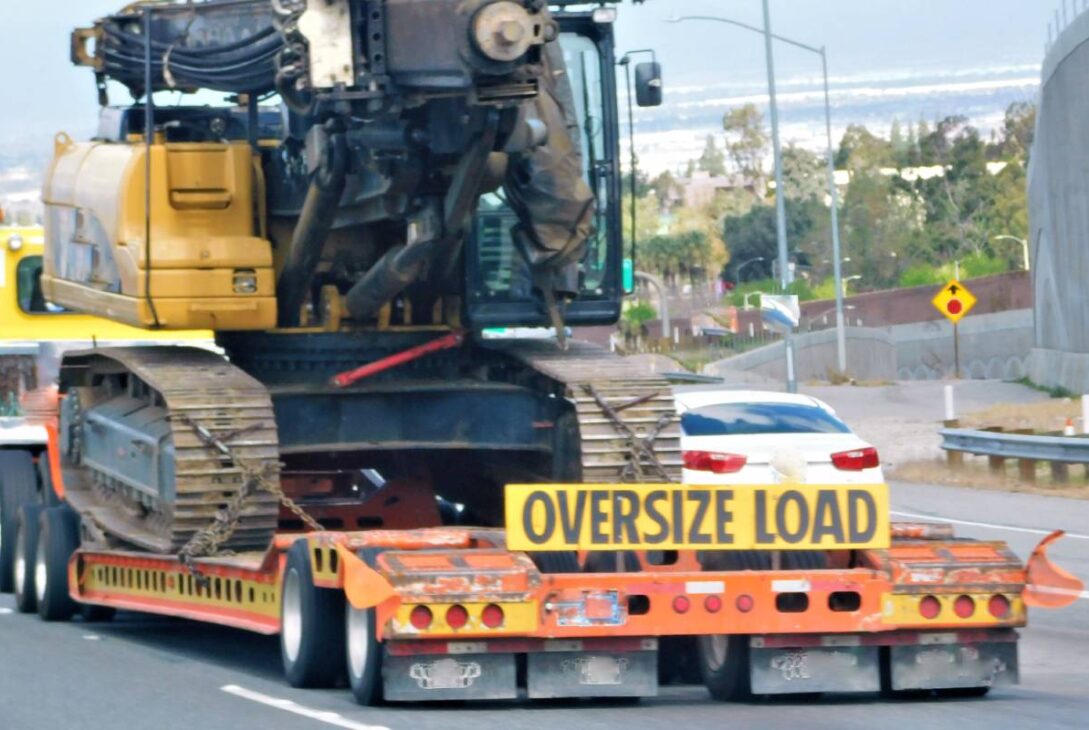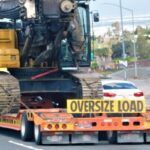Transporting large or heavy freight is one of the most complex logistics challenges in Australia. From mining equipment and agricultural machinery to prefabricated homes and construction materials, oversized and wide loads require careful planning, specialised vehicles, and compliance with strict road transport regulations.
But what exactly is the difference between an “oversized load” and a “wide load”? While these two terms are often used interchangeably, they don’t mean quite the same thing. Understanding their differences is crucial for anyone involved in freight logistics, haulage, or project management — especially when it comes to safety, compliance, and route planning.
Let’s explore the definitions, requirements, and key differences between oversized and wide load transportation in Australia.
Understanding Heavy Haulage Classifications
Before diving into the distinction between oversized and wide loads, it helps to understand how Australian road authorities classify heavy freight.
The National Heavy Vehicle Regulator (NHVR) oversees these regulations across most states and territories (with some local variations in Western Australia and the Northern Territory). According to NHVR, heavy loads are categorised based on weight, height, width, and length.
When a load exceeds one or more of these limits, it’s classified as either wide or oversized — depending on which dimensions go beyond the standard.
Typical vehicle dimension limits under Australian regulations include:
- Width: 2.5 metres maximum
- Height: 4.3 metres (for most roads)
- Length: 12.5 metres (for rigid vehicles) or 19 metres (for semitrailers)
- Weight: 42.5 tonnes gross combination mass (GCM)
Once a vehicle or its load exceeds these limits, it enters the realm of specialised freight, which requires permits, escorts, and specific route planning.
What Is a Wide Load?
A wide load refers specifically to freight that exceeds the standard width limit of 2.5 metres.
This is one of the most common types of restricted transport in industries like construction, mining, and agriculture — where large machinery such as bulldozers, combine harvesters, or steel beams need to be moved between sites.
Examples of Wide Loads
- Large excavators or graders
- Portable buildings or demountable site offices
- Precast concrete panels
- Wind turbine blades or tower sections
- Agricultural headers or tractors with wide attachments
The key defining feature here is width — even if the load’s length and height are within limits.
Requirements for Wide Load Transport
Wide loads require a number of safety and compliance measures:
- Oversize signs must be displayed at the front and rear of the vehicle.
- Warning lights or rotating beacons must be used when operating on public roads.
- Escort or pilot vehicles are often required when the width exceeds certain thresholds (e.g., 3.1m or 3.5m depending on the state).
- Travel time restrictions may apply, limiting movement to daylight hours or avoiding peak traffic periods.
Because wide loads can take up more than one lane or require vehicles to straddle the centre line, coordination with local authorities and route assessments are essential for road safety.
What Is an Oversized Load?
An oversized load, on the other hand, is a broader term that covers any load exceeding one or more of the standard dimension limits — including width, height, length, or weight.
That means all wide loads are oversized, but not all oversized loads are wide. For instance, a tall piece of equipment that exceeds height restrictions but fits within width limits would still be classified as oversized.
Examples of Oversized Loads
- Mining haul trucks and components
- Industrial tanks or silos
- Heavy transformers or generators
- Bridge beams or structural steel
- Yachts or boats on trailers exceeding height or length limits
Oversized Load Requirements
Oversized load transport requires even more detailed planning than wide loads, as multiple dimensions might exceed limits. Key requirements typically include:
- Route surveys to ensure clearances for bridges, tunnels, and power lines.
- Specialised trailers such as low loaders or extendable trailers.
- Load distribution analysis to ensure axle weight compliance.
- Escort vehicles and potentially police escorts for extremely large or heavy loads.
- Travel permits from the NHVR or local road authorities.
Because these loads can affect multiple aspects of road safety and infrastructure, every movement must be carefully approved and coordinated before the journey begins.
The Main Differences Between Oversized and Wide Loads
While both involve loads exceeding standard vehicle dimensions, the differences between oversized and wide loads lie mainly in scope and specificity.
| Aspect | Wide Load | Oversized Load |
|---|---|---|
| Definition | Exceeds standard width (2.5m) | Exceeds one or more standard dimensions (width, height, length, or weight) |
| Scope | Only refers to width | Can refer to width, height, length, or weight |
| Permits Required | Yes, for exceeding width limits | Yes, for any dimension or weight exceeding limits |
| Common Examples | Wide machinery, prefabricated homes | Heavy mining trucks, bridge beams, industrial tanks |
| Escort Requirements | Usually required above 3.1m width | Required for extreme dimensions or weights |
| Route Planning | Focused on lane clearance | Focused on all aspects (bridges, overhead wires, roads, gradients) |
In short:
- All wide loads are oversized.
- But oversized loads can be wide, tall, long, or heavy — or a combination of all four.
Safety Considerations for Both Load Types
Whether it’s a wide or oversized load, safety is the top priority. Due to their dimensions, these vehicles can affect visibility, road width, and manoeuvrability, creating potential hazards for other road users.
Here are some of the key safety measures required for both transport types:
Escort and Pilot Vehicles
Escort vehicles act as warning guides for oncoming traffic. They often travel ahead of and behind the main transport vehicle, ensuring other motorists are aware of the load’s size and movements.
Route Assessments
A detailed assessment ensures the load can safely pass under bridges, power lines, and through narrow roads. In some cases, temporary road closures or power line adjustments may be necessary.
Signage and Lighting
Clear and visible signs marked “OVERSIZE” must be displayed. At night or in poor visibility, amber flashing lights and reflectors are mandatory for visibility.
Communication
Drivers, escort operators, and traffic controllers communicate via two-way radios throughout the journey to coordinate movements and manage risks.
Speed and Timing Controls
Wide and oversized loads generally travel below normal highway speeds. Some routes restrict travel to daylight hours or specific times of day to reduce traffic disruption.
Permits and Regulations Across Australia
The permit process for oversized and wide loads varies depending on the jurisdiction and road network.
National Heavy Vehicle Regulator (NHVR)
The NHVR oversees heavy vehicle movements in most states and territories (excluding WA and NT). Operators must apply for:
- Class 1 permits for oversize and overmass vehicles
- Class 3 permits for non-standard heavy vehicles that don’t meet mass or dimension exemptions
Each application includes information about the load dimensions, weight, origin and destination, and proposed route.
State and Territory Variations
- Western Australia and Northern Territory: Managed by their respective road transport authorities with specific guidelines for remote and mining regions.
- Queensland and New South Wales: May impose additional travel restrictions and pilot requirements for certain dimensions.
- Victoria and South Australia: Require operators to follow approved network maps that show permissible roads for oversized loads.
Permits typically outline approved travel routes, escort requirements, and travel time restrictions.
Equipment Used for Wide and Oversized Load Transport
Transporting heavy and wide freight requires specialised equipment built for stability, strength, and flexibility.
Common vehicle types include:
- Low Loaders (Lowboys): Ideal for tall machinery due to low deck height.
- Drop Deck Trailers: Useful for mixed freight that requires height clearance.
- Extendable Trailers: Can adjust length to accommodate long loads like beams or blades.
- Modular Trailers: Configurable for extreme weights, often used in mining and energy sectors.
Each trailer type must be properly rated for the load’s mass and distributed evenly to prevent overloading any axle or suspension point.
Industries That Rely on Wide and Oversized Transport
Australia’s economy relies heavily on industries that depend on oversized and wide load transport, including:
- Mining and Resources: Hauling massive excavators, dump trucks, and processing equipment.
- Construction and Infrastructure: Moving bridge sections, girders, and large concrete components.
- Agriculture: Transporting harvesters, tractors, and silos.
- Energy: Delivering wind turbines, transformers, and power generators.
- Maritime: Relocating large vessels or boat hulls between docks.
These sectors often operate in remote regions where access roads are narrow or unsealed, making experienced transport operators essential.
Why Professional Expertise Matters
Handling wide or oversized freight is not a task for ordinary logistics companies. It demands professional expertise in load securing, permit management, route surveying, and coordination with authorities.
Experienced heavy haulage providers ensure compliance with all road regulations, maintain detailed safety records, and have access to pilot escorts and specialised trailers.
Attempting to transport an oversized load without the proper permits or escorts can result in fines, road damage, and serious safety hazards.
Final Thoughts
While “wide load” and “oversized load” might sound similar, the distinction lies in how far beyond standard limits the load extends and in which dimensions.
- A wide load focuses solely on excess width.
- An oversized load can exceed limits in width, height, length, or weight — often requiring more complex planning and permits.
Both require careful coordination, strict compliance, and skilled handling to ensure safety and efficiency on Australia’s roads.
For businesses and industries needing reliable and compliant heavy haulage solutions across Australia’s challenging routes, it’s vital to work with experts who understand these differences and can deliver your cargo safely and on time.
If you’re looking for a trusted partner for oversized or wide load transport in the Northern Territory and beyond, Darwin Transport offers the experience, equipment, and local knowledge needed to handle even the most complex freight movements with confidence.
For businesses and industries needing reliable and compliant heavy haulage solutions — from caravan transport to large-scale mining equipment — working with Darwin Transport ensures your cargo arrives safely and on schedule.








